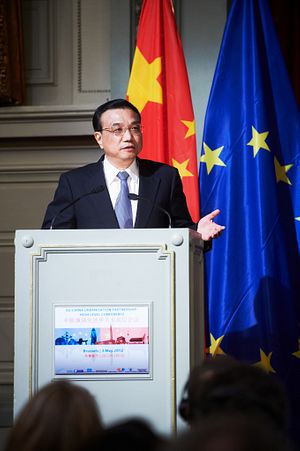Hungary has become the first European country to sign a memorandum of understanding with China on promoting the Silk Road Economic Belt and Maritime Silk Road, China media report. The MoU was signed on Sunday, during Chinese Foreign Minister Wang Yi’s visit to Budapest, where he met with Prime Minister Viktor Orban. In a statement on the occasion, Wang said he hopes more European countries will join in.
Hungary may be the first country in Europe to officially sign an MoU relating to China’s “One Belt, One Road” strategy, but the subject has cropped up repeatedly during Chinese interactions with Europe. When Xi Jinping toured Europe in April 2014, with stops in The Netherlands, France, Germany, and Belgium, he urged the EU and China to work together to combine EU policies with China’s Belt and Road. When Li Keqiang attended the China-Central and Eastern European (CEE) Leaders’ Meeting in Serbia in December 2014, he also highlighted the role Europe has to play in the Belt and Road – and the role China can play in completing infrastructure and energy projects in Central and Eastern Europe under the aegis of that initiative.
More recently, during Xi’s visits to Russia and Belarus this May, both countries agreed to work with China on the Silk Road Economic Belt. Belarus agreed to the project hoping to win Chinese infrastructure investments, while Russia promised to link its new Eurasia Economic Union with China’s Belt and Road.
While the Belt and Road are often discussed primarily in the context of China’s near neighbors – particularly Southeast and Central Asia – Beijing has long been clear about the importance of Europe, particularly Central and Eastern Europe, to the project. A few months after Xi Jinping first unveiled the twin Belt and Road concepts in speeches in Kazakhstan (September 2013) and Indonesia (October 2013), Li extended the Belt and Road all the way to Europe during a November 2013 visit to Romania.
Likewise, the official action plan for the Belt and Road, issues by Chinese government agencies in March 2015, described the Silk Road as “a new Eurasian Land Bridge” that “focuses on bringing together China, Central Asia, Russia, and Europe.” That means the Belt and Road, by China’s own definition, will be incomplete without buy-in from European countries. And Central and Eastern European countries in particular have a special role to play. As Xinhua put it on Monday, “CEE nations will be essential links in the Belt and Road Initiative.”
European countries, like many of the Asian supporters of the Belt and Road, are primarily focused on the economics. “Chinese firms have invested more than 5 billion U.S. dollars in CEE countries in sectors such as energy, infrastructure and machinery,” Xinhua reports. In coming years, China will build a high-speed railway connecting Hungary and Serbia and construct two nuclear reactors at a Romanian nuclear power plant. According to U.S. law firm Baker and McKenzie, Chinese investment in Europe doubled from 2013 to 2014, reaching $18 billion.
In other words, the Silk Road in Europe was alive and well before Hungary signed the MoU on Sunday – and it will only continue to grow as more government agreements officially tie existing investments and initiatives to China’s Belt and Road strategy.

































